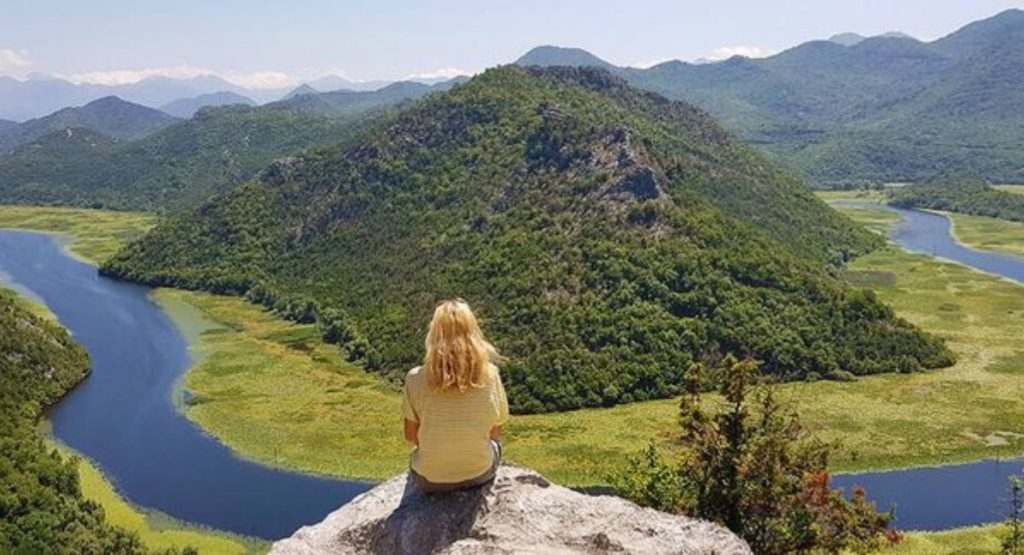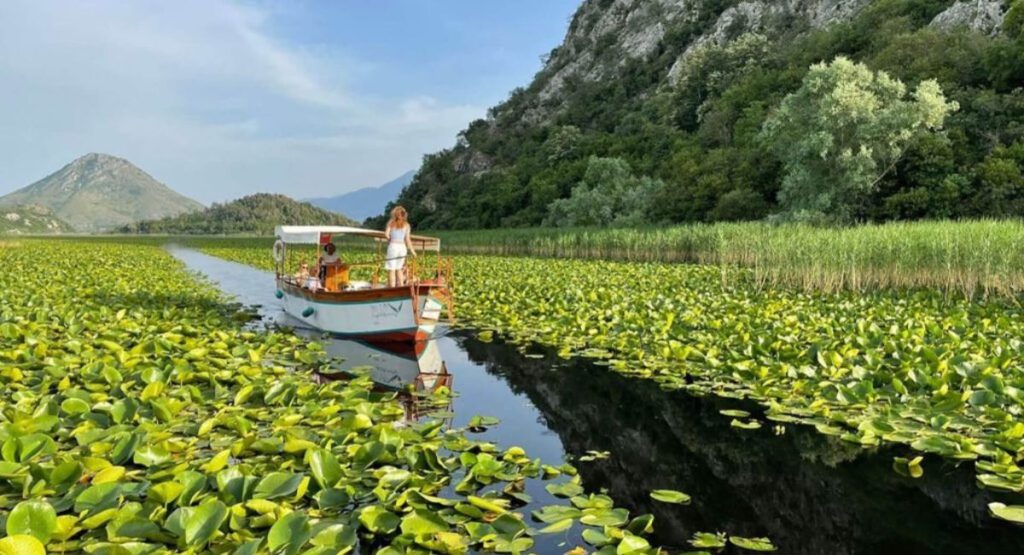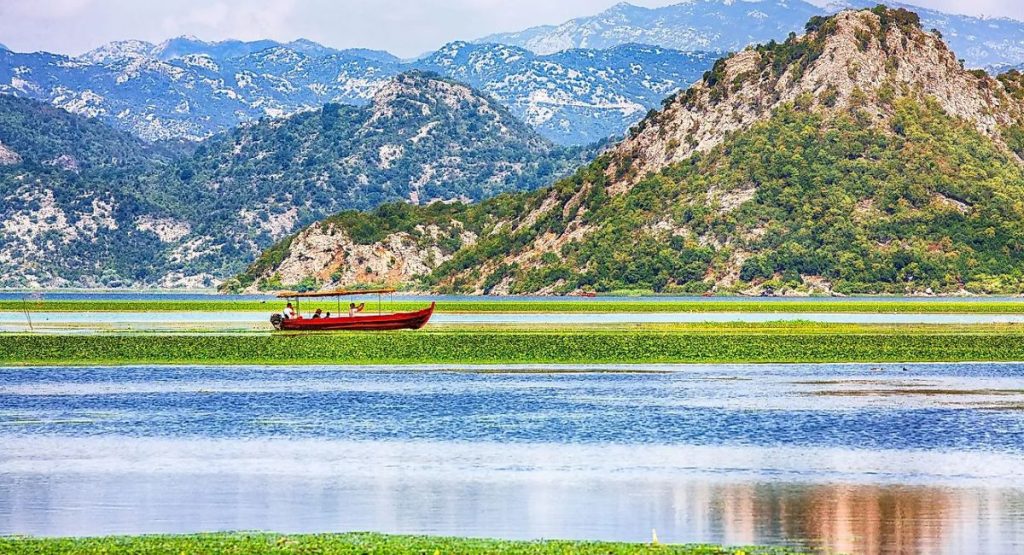Introduction: Why Lake Skadar Belongs on Your Montenegro Itinerary
Sometimes planning a trip can feel overwhelming. You see photos of Lake Skadar’s lily-covered waters and winding rivers, but when you search “How to Visit Lake Skadar National Park in Montenegro,” the information seems scattered or too vague. Do you need a car? Should you start in Virpazar or Rijeka Crnojevića? It’s easy to feel stuck when all you want is a clear plan for exploring one of Montenegro’s most beautiful places.
That’s exactly what this guide is here to give you. In the next sections, you’ll learn everything about how to visit Lake Skadar National Park in Montenegro—how to get there, the best things to do, when to go, and local tips that will save you time and stress. By the end, you’ll know not just the basics, but also the insider details that make your trip smooth, memorable, and worth every moment.
What Is Lake Skadar National Park?
Lake Skadar (also called Skadarsko Jezero in Montenegrin) is the largest lake in the Balkans, straddling the border between Montenegro and Albania. Roughly two-thirds of the lake lies within Montenegro, where it’s protected as a national park.
Key Facts to Know:
- Size: Around 370–530 square km (depending on the season, as water levels change).
- Designation: National Park since 1983.
- Unique ecosystem: Over 260 bird species, including the rare Dalmatian pelican.
- Cultural heritage: Ancient monasteries, Ottoman fortresses, and centuries-old fishing villages.
In short, Lake Skadar isn’t just a body of water—it’s a living tapestry of history, wildlife, and traditional Montenegrin life.

Why Visit Lake Skadar?
You might be wondering: Why should I add Lake Skadar to my already packed Montenegro trip?
Here’s why:
- Breathtaking scenery – Imagine the fjords of Kotor, but in a freshwater setting, surrounded by mountains and carpets of water lilies.
- Wildlife paradise – Perfect for birdwatchers, photographers, and nature lovers.
- Authentic experiences – Villages around the lake feel untouched by mass tourism.
- Cultural richness – Byzantine monasteries, Orthodox churches, and Ottoman ruins add layers of history.
- Escape the crowds – The coast can get busy in summer, but Skadar offers serenity.
How to Get to Lake Skadar National Park
By Car
The easiest way to explore is by car. The park’s main entrances are located in Virpazar and Rijeka Crnojevića, both reachable within:
- 30–40 minutes from Podgorica
- 40–50 minutes from Bar
- About 1 hour from Budva or Kotor
Parking is available in Virpazar (the most popular base).
By Train
A scenic and affordable option: take the Bar–Podgorica railway and stop at Virpazar. The train ride crosses bridges with stunning views of the lake.
By Bus
Buses run from Podgorica and Bar to Virpazar, but schedules can be limited and not always tourist-friendly.
Organized Tours
If you don’t want to worry about logistics, book a day trip from Podgorica, Budva, or Kotor. Many tours include boat rides and wine tastings.

Best Things to Do in Lake Skadar National Park
1. Take a Boat Tour
The most iconic way to experience the lake. From Virpazar, countless local families offer tours in traditional wooden boats.
- Options: One-hour short rides, half-day explorations, or full-day adventures.
- What you’ll see: Water lilies, secluded beaches, monasteries, and bird colonies.
- Tip: Early morning or late afternoon tours are the most scenic (and less hot in summer).
2. Go Birdwatching
Lake Skadar is an internationally recognized wetland and bird reserve. Spot pelicans, herons, cormorants, and kingfishers.
- Best time: Spring and autumn migrations.
- Guided tours: Local guides know the best hidden spots.
3. Explore Virpazar
This small village is the main gateway to the park. Walk its stone bridges, visit the local market, and enjoy fresh fish in family-run restaurants.
4. Visit Rijeka Crnojevića and the Pavlova Strana Viewpoint
The village of Rijeka Crnojevića is picturesque, but the highlight is the horseshoe bend of the Crnojevića River at Pavlova Strana—one of Montenegro’s most photographed viewpoints.
5. Hike the Trails
Hiking is underrated at Lake Skadar. Trails range from short paths around Virpazar to multi-hour routes leading to monasteries and panoramic lookouts.
6. Discover the Monasteries
Historic monasteries dot the islands and shores of the lake. Some date back to the 14th century. The most famous include Starčeva Gorica and Vranjina Monastery.
7. Swim or Kayak
In summer, the lake is warm enough for swimming. Kayaks are available for rent in Virpazar, allowing you to paddle at your own pace.
8. Taste Local Wine and Food
The region is Montenegro’s wine country. Try Vranac wine, homemade rakija, and local dishes like carp, bleak fish, and cheese from Njeguši.
When Is the Best Time to Visit Lake Skadar?
- Spring (April–June): Best for birdwatching and lush greenery.
- Summer (July–August): Hot, but perfect for boat tours, swimming, and festivals. Can get crowded in Virpazar.
- Autumn (September–October): Fewer crowds, pleasant weather, grape harvest season.
- Winter (November–March): Quiet, atmospheric, but some boat tours and restaurants may close.
Where to Stay Around Lake Skadar
- Virpazar: Convenient, central, with plenty of guesthouses and eco-lodges.
- Rijeka Crnojevića: Quieter, scenic, perfect for slow travel.
- Rural stays: Many families offer agritourism stays where you can experience Montenegrin hospitality.
Challenges and Misconceptions
- “It’s just a lake.” In reality, Lake Skadar is an entire ecosystem and cultural hub.
- Public transport is tricky. Without a car, you may need to rely on tours or taxis.
- Weather matters. Summer afternoons can be very hot; mornings are more comfortable.
Mistakes to Avoid When Visiting
- Rushing through with only a quick photo stop.
- Taking the cheapest boat ride without checking duration or route.
- Forgetting insect repellent in summer.
- Skipping local food and wine experiences.
- Expecting luxury infrastructure—this is still a rural, authentic destination.
Tips for a Smooth Visit

- Book boat tours in advance during peak season.
- Carry cash—many boat operators and small restaurants don’t take cards.
- Bring binoculars if you enjoy birdwatching.
- Wear light clothes, sunscreen, and a hat in summer.
- Combine your visit with a trip to Podgorica, Bar, or Cetinje for a fuller itinerary.
Industry Trends: Sustainable Tourism at Lake Skadar
Lake Skadar is increasingly marketed as a destination for eco-tourism. Local families run most tours, so your visit supports the community. There’s also a growing emphasis on protecting bird habitats and regulating fishing. Expect more eco-lodges, cycling routes, and birdwatching hides in the coming years.
FAQs About How to Visit Lake Skadar National Park in Montenegro
1. Do I need a ticket to enter the park?
Yes. There’s a small entrance fee, usually paid in Virpazar before boat tours.
2. Can I visit Lake Skadar in one day?
Yes, but staying overnight lets you enjoy sunsets, early birdwatching, and local hospitality.
3. Is swimming safe in the lake?
Yes, the water is clean and warm in summer. Just stick to recommended swimming spots.
4. Are there guided tours in English?
Yes. Many local boat operators and guides speak basic English, and tour companies offer full English-speaking guides.
5. Can I rent a kayak instead of taking a boat tour?
Absolutely. Kayaks give you freedom, but they require stamina, especially in windy conditions.
Conclusion: Why Lake Skadar Shouldn’t Be Missed
Visiting Lake Skadar National Park isn’t just about seeing a lake—it’s about immersing yourself in Montenegro’s wild beauty, tasting its traditions, and connecting with a slower, more authentic side of the Balkans.
Whether you glide through water lilies on a wooden boat, sip Vranac wine at sunset, or hike up to a forgotten monastery, you’ll leave with memories far richer than a simple day trip.
So, if you’re planning your Montenegro journey, make space for Lake Skadar. It’s not only one of Europe’s hidden gems—it’s an experience that will stay with you long after you’ve left.
